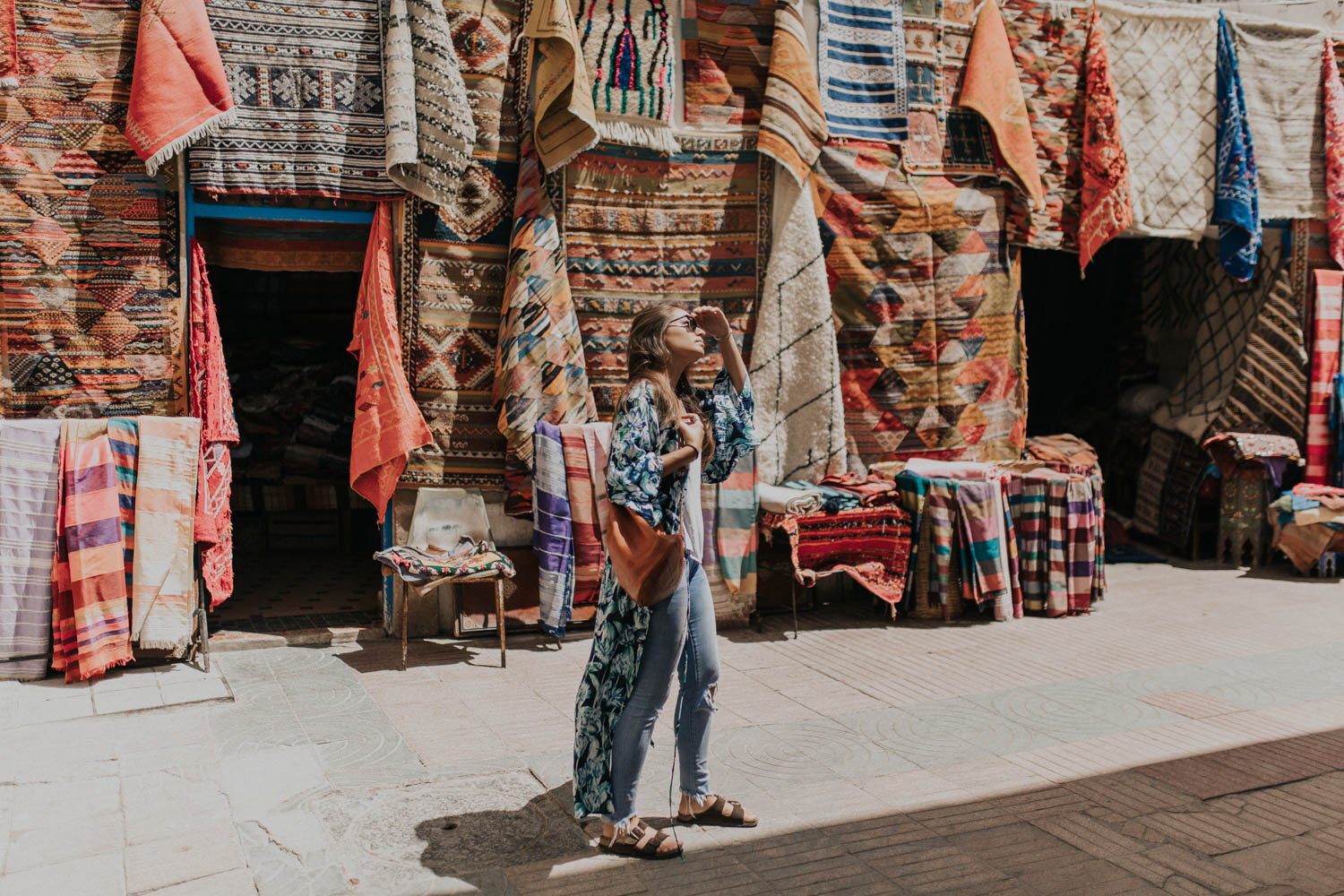Morocco, a land of diverse landscapes and rich cultural heritage, is a dream destination for many travelers. From the bustling markets of Marrakech to the serene sands of the Sahara Desert, the country offers a unique blend of experiences. However, dressing appropriately is essential to respect local customs and ensure comfort during your travels. Here’s a comprehensive guide on what to wear in Morocco.
Understanding the Climate
Morocco’s climate varies significantly depending on the region and the time of year. Coastal areas like Casablanca and Rabat enjoy a Mediterranean climate, with mild winters and hot summers. Inland cities such as Marrakech and Fes experience more extreme temperatures, with scorching summers and chilly winters. The desert regions, including the famous Sahara, can be sweltering during the day and freezing at night.
Tip: Check the weather forecast for your specific travel dates and destinations to pack accordingly.
General Dressing Tips for Morocco
- Respect the Culture: Morocco is a predominantly Muslim country with conservative dress codes. While you don’t need to dress like a local, modest clothing is appreciated. For women, this means covering the shoulders, cleavage, and knees. Men should avoid wearing shorts above the knee.
- Comfort is Key: Opt for lightweight, breathable fabrics such as cotton or linen to stay cool in the heat. Loose-fitting clothes are also more comfortable and culturally appropriate.
- Layering is Essential: Due to the significant temperature variations, especially in desert areas, layering is crucial. Pack a light jacket or sweater for cooler evenings and early mornings.
What Women Should Wear
Tops: Long-sleeved shirts, blouses, and tunics made from lightweight materials are ideal. T-shirts are acceptable as long as they cover the shoulders and have a modest neckline.
Bottoms: Long skirts, maxi dresses, and loose pants are perfect for Morocco. They are comfortable, breathable, and culturally appropriate. If you prefer wearing pants, choose loose-fitting styles over tight jeans or leggings.
Accessories: A scarf or shawl is a versatile accessory. It can be used to cover your head when visiting mosques, protect against the sun, or provide an extra layer in the evenings.
Footwear: Comfortable walking shoes are essential, especially for exploring cities and markets. Sandals are great for the beach and casual outings, but ensure they are sturdy enough for walking on uneven surfaces.
Beachwear: Swimsuits are acceptable at private beaches, hotels, and resorts. However, it’s advisable to wear a cover-up when moving away from the beach or pool area.
What Men Should Wear
Tops: Short-sleeved shirts, T-shirts, and polos are fine, but avoid sleeveless tops. Long-sleeved shirts are preferable for protection against the sun and to respect local customs.
Bottoms: Lightweight trousers, chinos, and long shorts are suitable for men. Avoid wearing shorts that are too short, especially in conservative areas.
Accessories: A hat or cap is useful for sun protection. Sunglasses are also recommended.
Footwear: Comfortable, sturdy shoes are a must for exploring. Sandals can be worn, but ensure they are appropriate for walking.
Special Considerations for Different Regions
Cities (Marrakech, Fes, Casablanca): In urban areas, the dress code is slightly more relaxed, especially in tourist zones. However, it’s still important to dress modestly. Lightweight, modest clothing will keep you comfortable and respectful.
Desert (Sahara): For desert trips, breathable, loose clothing is essential. Long sleeves and pants will protect you from the sun and sand. A wide-brimmed hat and sunglasses are also crucial. At night, temperatures can drop sharply, so pack a warm jacket or sweater.
Mountains (Atlas Mountains): If you’re trekking or exploring the Atlas Mountains, be prepared for cooler temperatures, especially at higher altitudes. Layered clothing, sturdy hiking boots, and a warm jacket are necessary.
Packing List for Morocco
- Long-sleeved shirts and blouses
- T-shirts with modest necklines
- Long skirts, maxi dresses, and loose pants
- Light jacket or sweater
- Comfortable walking shoes and sandals
- Scarf or shawl
- Hat or cap for sun protection
- Sunglasses
- Swimsuit and cover-up for beach areas
- Warm clothing for desert nights and mountain areas
Final Tips
Respecting local customs while traveling in Morocco not only shows cultural sensitivity but also enhances your travel experience. Dressing modestly and appropriately ensures you feel comfortable and confident as you explore this fascinating country. Whether you’re wandering through ancient medinas, hiking in the mountains, or riding camels in the desert, being prepared with the right clothing will make your Moroccan adventure truly memorable.



0 Comment